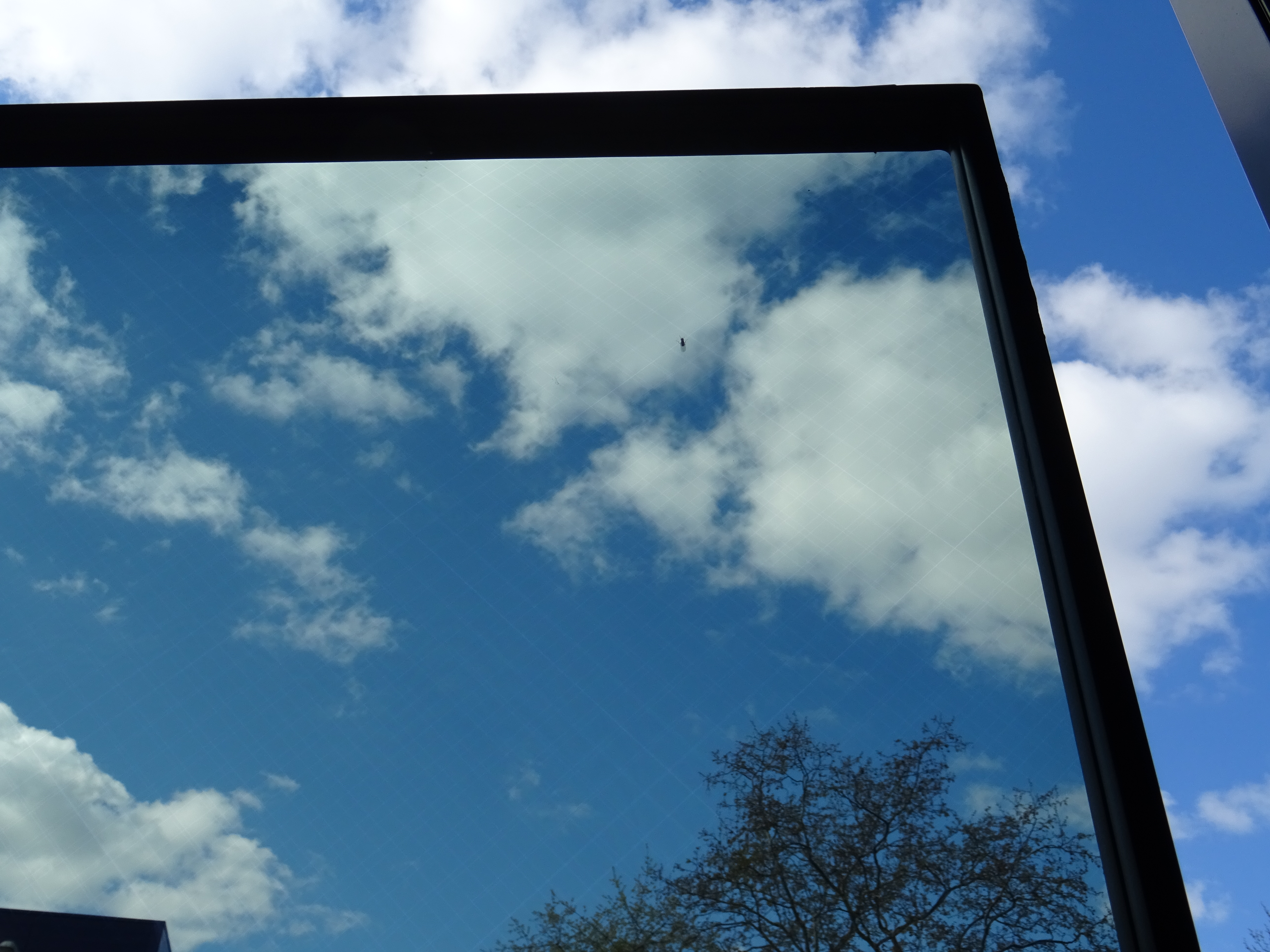News #14
No more dead spots in buildings: Fraunhofer ISE develops insulating glass transparent to radio waves
We have all been there: The moment we enter a building, we lose our mobile network. The culprits are modern double or triple insulating glass panes with thermal or solar control coatings. A team at Fraunhofer Institute for Solar Energy Systems worked with industrial partners to develop insulating glass that is transparent to radio waves, significantly improving the indoor reception for cell phone services such as LTE, 5G and GPS navigation. The technology will be presented at the BAU trade fair in Munich (April 17–22).
Double or triple insulating glazing with low-emissivity or solar control coatings is the state of the art for modern glass façades. Low-e coatings do not just block out thermal radiation, but also reflect radio waves. Cell phone signals are reflected back and forth within this Faraday’s cage, with only a small part of the radio signal leaving the building. In particular, the frequency range relevant for speech and data transmission as well as for navigation (0.5–3.7 GHz), which is the basis for cell phone use, Wi-Fi and navigation systems, is shielded by modern insulating glass.
End devices respond to poor reception by maximizing the radio transmission power, exposing users to a stronger electromagnetic field, and reducing the devices’ battery life.
Segmented low-e coatings considerably improve radio reception
A team at Fraunhofer ISE worked with industrial partners to develop a type of insulating glass in which narrow lines of about 50 micrometers of the low-e coating were removed by laser. The segmentation of the low-e coating with almost invisible grid patterns makes the insulating glass transparent to radio waves. While the long-wave thermal radiation is reflected back into the building, the glass allows the even longer radio waves to pass through.
The researchers tested and evaluated various types and configurations of radio wave-transparent glazing on a prototype façade and found that the signal transmission was increased by a factor of 100 to 100,000. In particular, the achievable LTE download speed was improved by more than a factor of 50. This means that smartphones and tablet computers have to increase their power much less in order to receive data, reducing electromagnetic pollution within buildings as well as the energy consumption of devices.
Structuring the thermal protection coating increases the U value slightly by about 0.1 W/(m2*K). “This means that cell phone reception is noticeably improved without considerably impairing thermal insulation. This is particularly relevant for modern office buildings with a high energy standard and large glass panes,” explains Thomas Kroyer, Group Manager Coating Technology and Systems at Fraunhofer ISE.
The solution is suitable for heat and UV protective coatings for double or triple glazing in buildings and for the automotive sector. Fraunhofer ISE’s industrial partners Glas Arnold and isophon glas have already launched the product.
Fraunhofer ISE will be presenting a sample of the radio transparent insulating glass at BAU, the world's leading trade fair for architecture, materials and systems, in hall C2, booth 528 from April 17–22 in Munich.

Last modified: